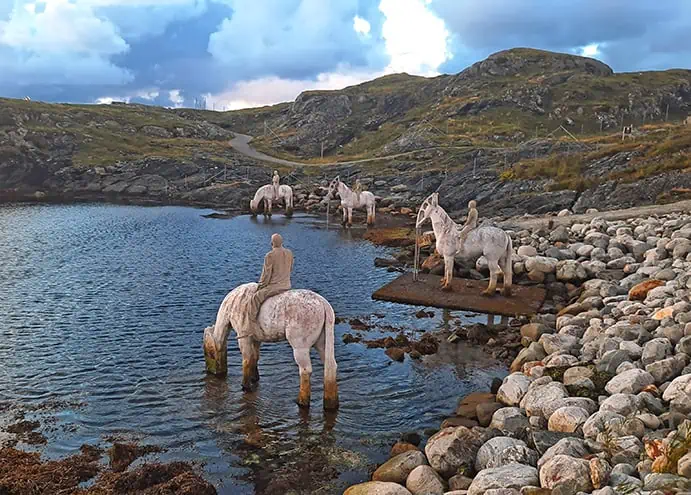
Since modern times, art has been a popular tool of expressing critical political views that often deviate from the ruling state of affairs. For British sculptor Jason deCaires Taylor, raising awareness to the looming global crisis of climate change has been a life-mission. One of his most renowned works, “the Rising Tide” is now steeped in the waters of Kvalsvik cove, north of the Norwegian city of Haugesund.

By: Omri Westmark
Date: 19:09 22.01.23
Last Update: 23:50 20.06.23
In the last decade or so, global warming has been a major point of contention throughout the developed world and beyond. With the ever-increasing effects of rising temperatures, more and more artists take part in a worldwide endeavor to reverse the current trends. Perhaps, the most ardent member of this movement is Jason deCaires Taylor, a UK born artist renowned for his water-related sculptors, including the world’s first underwater museum in Cancun.
In an attempt to influence parts of Britain’s political class, Taylor erected in 2015 an art installation atop the riverbed of the Thames in London, a mere kilometer away from the British Parliament. The work was comprised of 4 white horse-shaped sculptures whose heads were replaced with an oil pumpjack, a reference to our current reliance on fossil fuels which substituted the workhorse of the pre-industrial era.
As the statues were situated within the confines of the river, they were subjected to the daily fluctuations of the water level caused by the tidal cycle, hence their name, “the Rising Tide”. By being partly submerged underwater, Taylor created an allegory to the impending cataclysm of the rising sea level across the world. That in turn resonated with the sculptures’ main source of inspiration, the four horsemen of the apocalypse who according to the New Testament’s Book of Revelation, represent the famine, war, conquest and death unleashed on humanity on doomsday.
In 2019, the 4 sculpted horsemen were relocated into the shallow waters of Kvalsvik, a hidden cove nestled two kilometers north of downtown Haugesund, in southwestern Norway. While initially, the transfer was supposed to be until the end of 2021, it seems as if the quaint art installation is likely to stay at its new whereabouts. As sea level is expected to rise significantly during the 21st century, the equine statues of Kvalsvik Sculpture Park will be at the forefront of climate change, progressively obscured by water with each day that passes.

photography by: Omri Westmark

photography by: Omri Westmark

photography by: Omri Westmark

photography by: Omri Westmark

photography by: Omri Westmark

photography by: Omri Westmark

photography by: Omri Westmark
